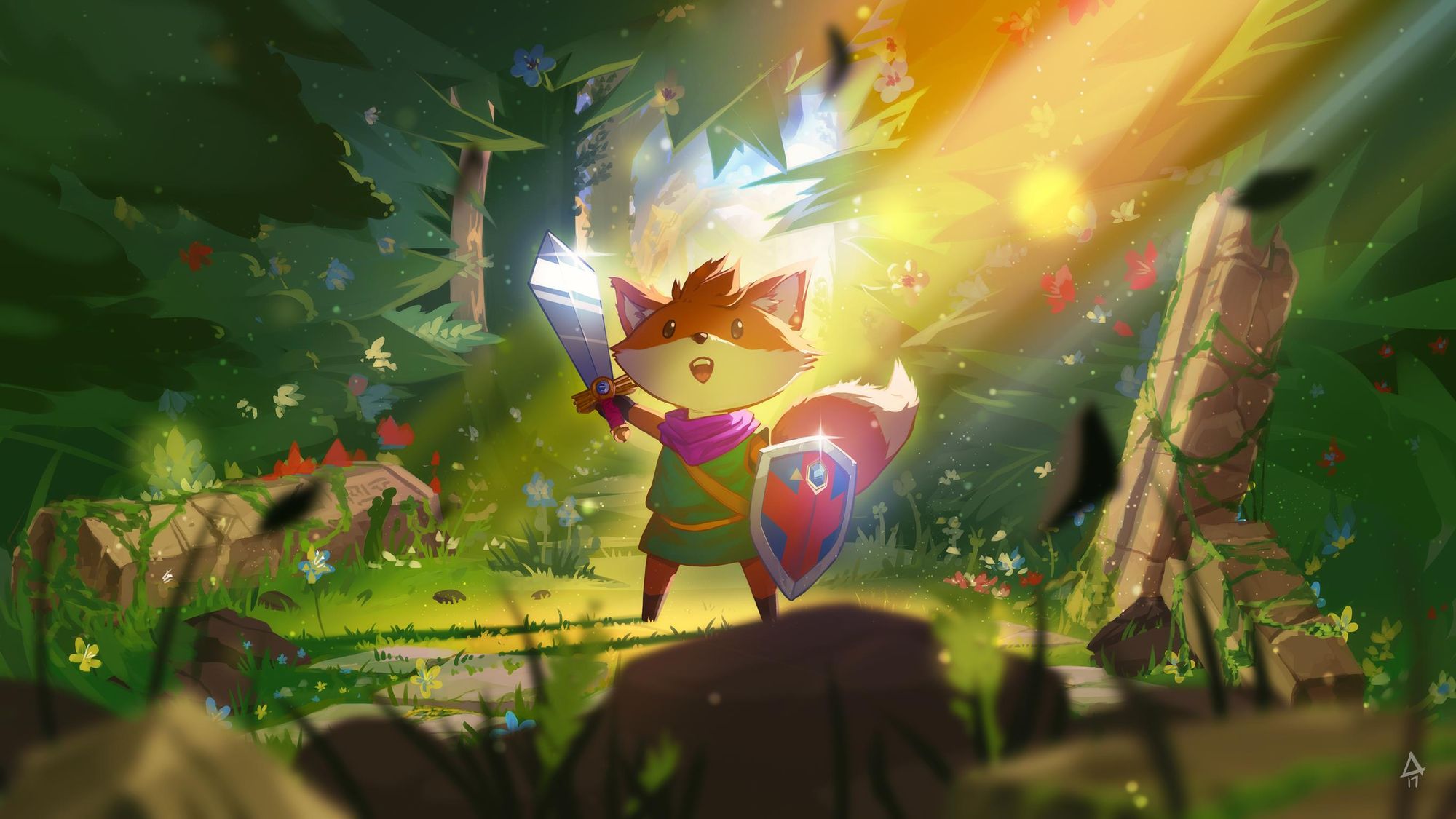Tunic Condenses the Best of the '90s Into One Adventure
A nostalgia-fuelled adventure

Tunic immediately confronts players with the timeless weeb masterpiece of killing slimes. As you clear the first quarter of the map, you’ll notice that while the combat is unremarkable, it’s satisfyingly simple, barely embellished with unique mechanics that balance each fight. As ordinary as boss and enemy behaviors are in Tunic, this is one of those games from which each frame could be a promotional still, and the enemies at least look stylish as they attack you, while environments are equally charming.
Tunic’s isometric camera evokes a post-'90s atmosphere similar to that of Hyper Light Drifter or The Legend of Zelda: Minish Cap. It also incorporates various elements from games like The Legend of Zelda: Ocarina of Time, Super Mario 64, Super Metroid, and Castlevania 64. Other games in the last few years have chosen a particular '90s element to riff on (Hyper Light Drifter referenced arcade-like combat and combos, while The Witness felt like an homage to Myst). Tunic, on the other hand, is something of a grab-bag of elements taken from a range of genres from the past decade (including sidescrollers, platformers, and Metroidvanias).

One of the most important factors of the camera is that it’s static, obfuscating paths simply because walls or buildings are in front of those paths. The only access you’ll have to different perspectives will be through telescopes across the map. Sometimes, you’ll uncover a Dark Souls-style shortcut back to the checkpoint simply because the exit's visible and the entrance isn’t. Rarely is a shortcut through a locked door though. The puzzling map is more about attention to detail than unlocking areas by pulling levers and collecting keys. There are locked doors and elevators in this game, but many shortcuts are obfuscated in purely cosmetic ways.
Another effective '90s element is super simple character development. Tunic offers an upgrade system that substantially strengthens the protagonist while limiting the number-crunching that breaks immersion. Instead of you choosing attributes in which to invest whenever you obtain enough experience points, advancements for certain attributes are hidden in treasure chests. I won’t say anything more apart from Tunic offering one of my favorite approaches to character development in recent memory.
As strong as the upgrade mechanic is, the most intriguing part of Tunic is the N64-style instruction manual accessible from the pause menu. Throughout the game, you’ll pick up pages to this manual, and they’ll slowly reveal the game’s mechanics. More frustratingly, only part of the manual is in English, while the rest of it is in a "fake" language. At first, this language annoyed me, but later, I understood the choice: Maybe the purpose of the made-up language is to evoke the feeling of being a little kid who can’t read. At least, that’s what looking at the manual reminded me of, and I ultimately appreciated the gesture. Each nugget of information in the manual regards an essential mechanic, so not only will you have incentive apart from completion, but you’re going to spend a lot of time perusing the pages.
If you love Metroidvanias as much as I do, and you want thrilling combat that changes your life, Tunic is a curveball, presenting only one truly punishing boss. As a puzzle game in an adventure game’s clothes, it’s going to be outside your comfort zone, and that’s exactly what’s going to make it a powerful and enjoyable experience. As I’m a millennial who’s a year older than the oldest zoomers, Tunic has made me feel a stronger connection to millennials who were old enough to experience fully the best games of the '90s, while I spent the '90s as a toddler who could barely use a controller without asking my dad to help me with the odd boss. I suspect I have a better subconscious understanding of what was so captivating to older millennials about '90s games thanks to Tunic.
Tunic wasn’t what I expected, but it helped me realize that I didn’t need another boss moveset to memorize. I needed to take out a notepad and write things down. If you’re particularly nostalgic about games from the '90s, I hope my account here is exhaustive enough to suggest why Tunic’s definitely the game for you.
